I visited recently part of Wadi (Valley) Hadramout in east Yemen: awesome.
Lying on the bed of a large but dried river, the arid valley represents the northern part of Hadramout region connecting the Indian Ocean in the south and the Rub’al-Khâli Desert in the north. Hadramout region used to witness sustained flows of commercial caravanes shuttling between China, India, Oman on one hand, Mecca and the Mediterranean Sea on the other hand. The area was also a major producer of frankincense.
Hadramout has been only loosely united politically throughout its history. In the 19th and 20th century, it opposed two sultanates – the Qa’aiti based in Mukalla in Coastal Hadramout, and the Kathiri headquartered in Seyun in Wadi Hadramout.
Seyun
Administrative capital of Wadi Hadramout under the Khatiri sultan as nowadays, Seyun was famous for its large palm tree plantation as well as for its palace.
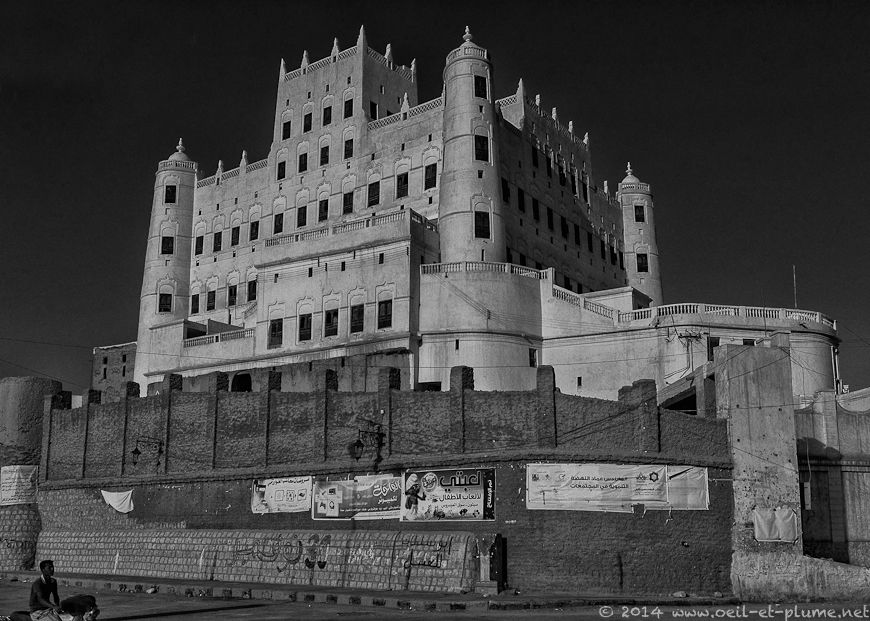
Originally a fort made in clay brick, the palace was built in an anglo-Indian style in the early 1920’s to serve as residence of the Khatiri sultan then ruling Wadi Hadramout under the British-run Aden protectorate. The massive building hosts now a museum and a library.
Street life attracts me more than museums. Next to the palace, the bazaar displays its share of local goods including famous seeds and spices. As now elsewhere in Yemen, the place gathers nowadays also qat chewers.
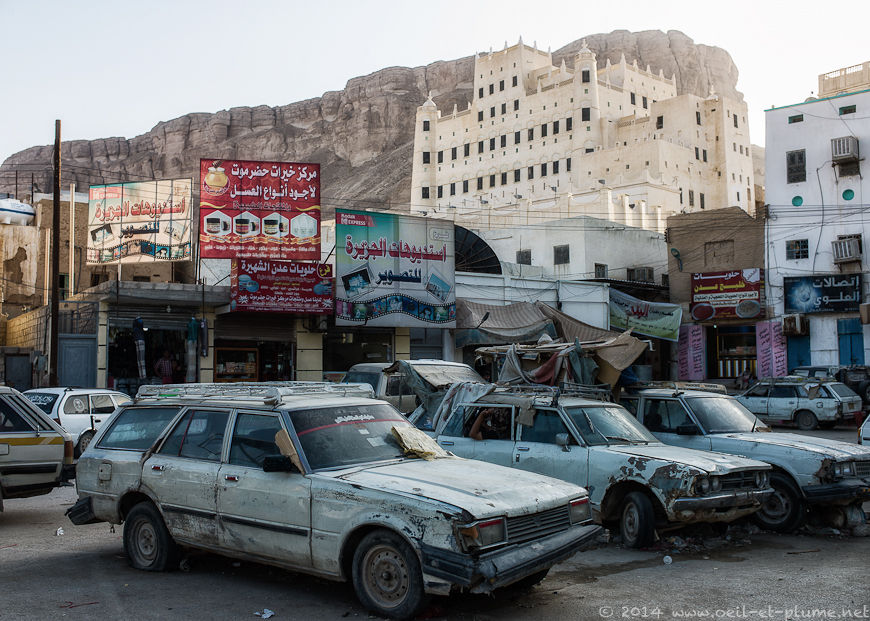
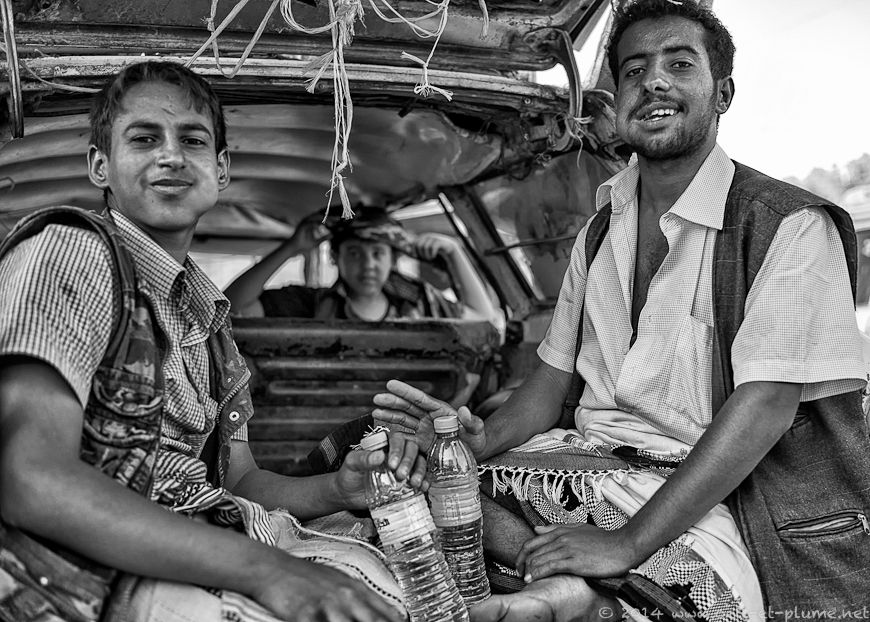
More than qat indeed, the old town draws my attention, providing beautiful venues for street photography. The mud architecture on a wooden structure is typical of Hadramout as it provides cool homes and spares on rock – a rather rare building material.
Local people are warm and welcoming. One of them crosses the street to greet me, happy to see again a foreigner in his town. Other locals are keen to pose for my camera.
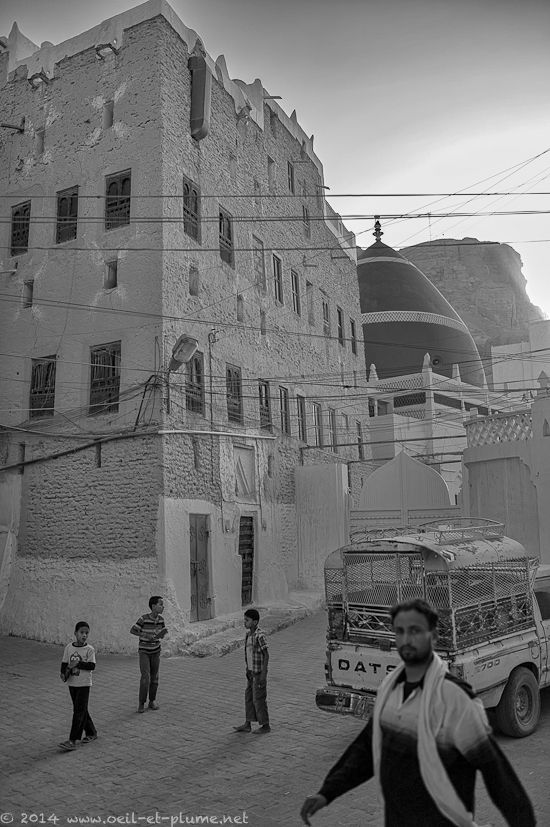

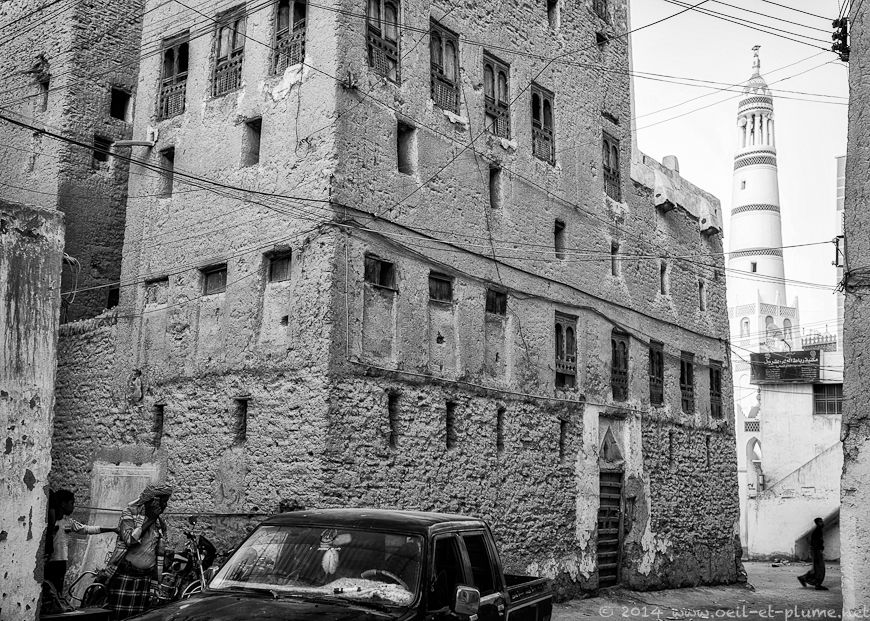
Opposite the palace, two exquisitely shaped clay domes top the tombs of revered Islamic figures as well as various madrasas (Islamic schools).
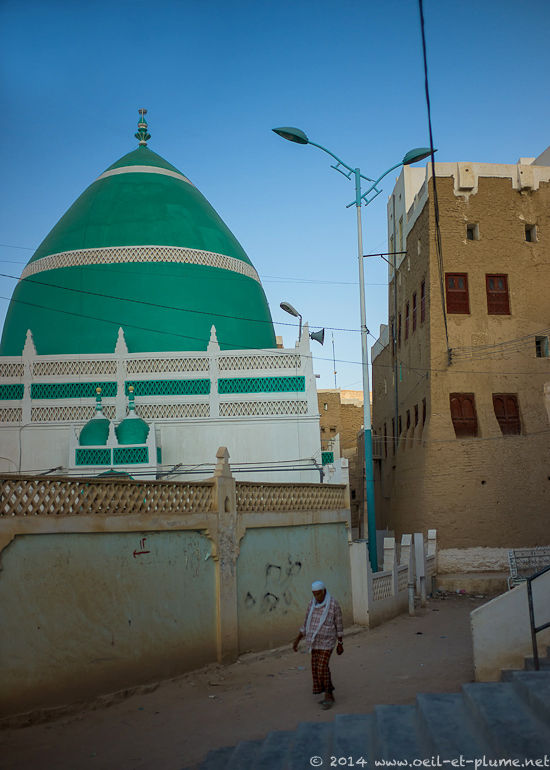

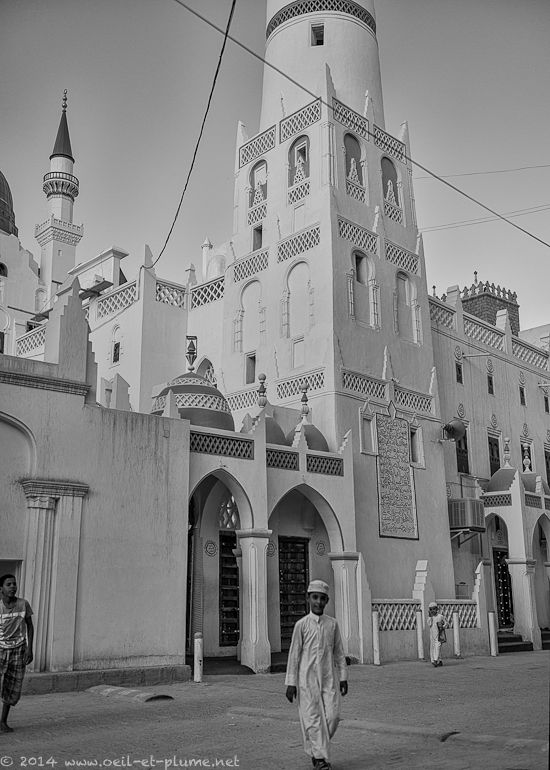

Time to leave Seyiun as the capital town is not all in Wadi Hadramout, far from that.
Tareem
Tareem town is a major intellectual and religious centre. It hosts many Sayyid – highly respected Islamic aristocracy descending directly from the Prophet Muhammad. It is also a renowned locus for Islam studies, particularly its Sufi school of thought since the 10th century, attracting scholars and students from all over the Muslim world. The town is said to have counted up to 360 mosques and madrasas.
Tareem counts also many private palaces built by wealthy Hadramis who made their fortune abroad.
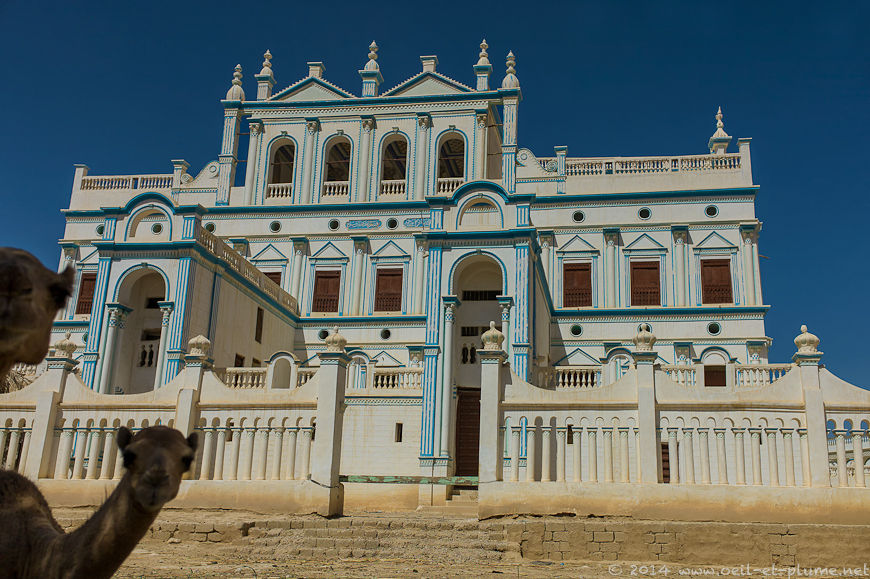
Early 19th century, Wadi Hadramout was impoverished since its once flourishing agriculture had been severely undermined by internal feud. Looking for socio-economic advancement, many Hadramis emigrated to India, Indonesia, Singapore and East Africa, following earlier migration flows from Hadramout region.
Their respective fortunes differed immensely indeed. However, their remittances became, and still represent nowadays, one of the main income sources for Hadrami resident population. The remittances were often used to buy land and build homes, at times sumptuous like the palace above.
Hadrami wealthy migrants also gained significant political influence in Hadramout in the 19th and first half of the 20th centuries. They contributed significantly to a cultural movement initiated amongst the Arab diaspora in Southeast Asia before spreading to Hadramout. The cultural movement raised the stake of education through the proliferation of schools, cultural clubs and associations, as well as of local journals. As a matter of fact, many Hadrami people are highly educated and strive to ensure a solid and refined education to their children.
Let’s now head to Shibam, the famous walled historical town.
Shibam
Shibam is for sure the pearl of Wadi Hadramout. Surrounded by palm trees, the tiny town (380 x 250 meters) hosts nowadays a mere 2.800 residents living in 444 houses.
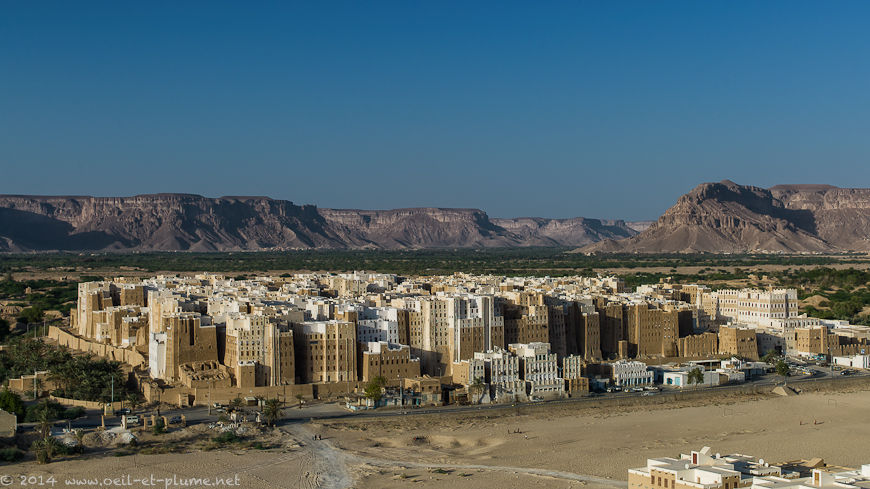
The historical town used to be far larger and more populated in medieval times. Two major flash floods in the 13th and 16th centuries destroyed an important part of the walled city. A newer settlement on the other side of the riverbed provides an iconic panoramic view on Shibam.
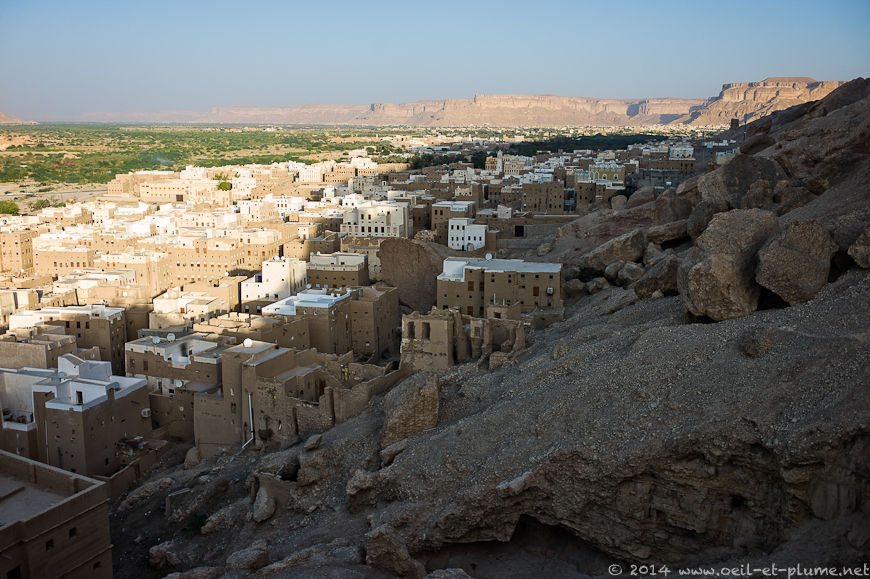
Shibam was founded back in antiquity. It in the first centuries CE, the settlement developed into a major stopover and trading place, owing to its strategic and secure location on the regional trading route. With the advent of Islam, a Shibami king took a prominent role in the conquest of Egypt by the Arab armies. Shibam was then appointed as the regional capital of Islamic government in western Hadramout.
What is left from the walled town sits on a hill in the middle of the valley and reflects mostly its status following the 16th century floods. At that time was built an ingenious system of weirs outside Shibam to protect the town from future flash floods.
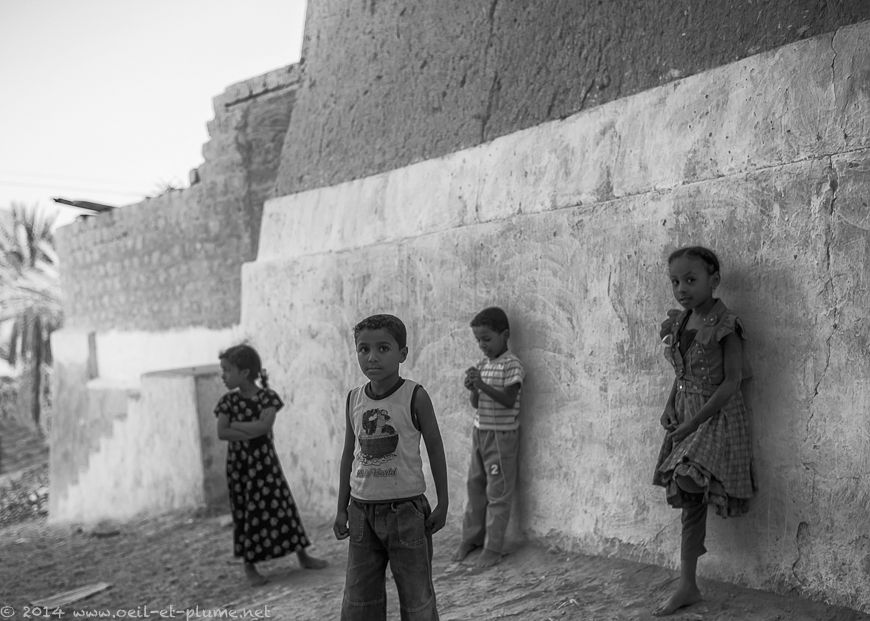
The walled town is dotted with only main entrance, which provides separate walkways for both genders. Two palaces form the eastern side of the main square: one hosted the Kathiri sultan who ruled over Shibam from the 13th to the mid-19th centuries; the other was the home to the Mukalla-based Al-Qai’iti sultan who took over from the Kathiri family and purchased part of the town in the second part of the 19th century.
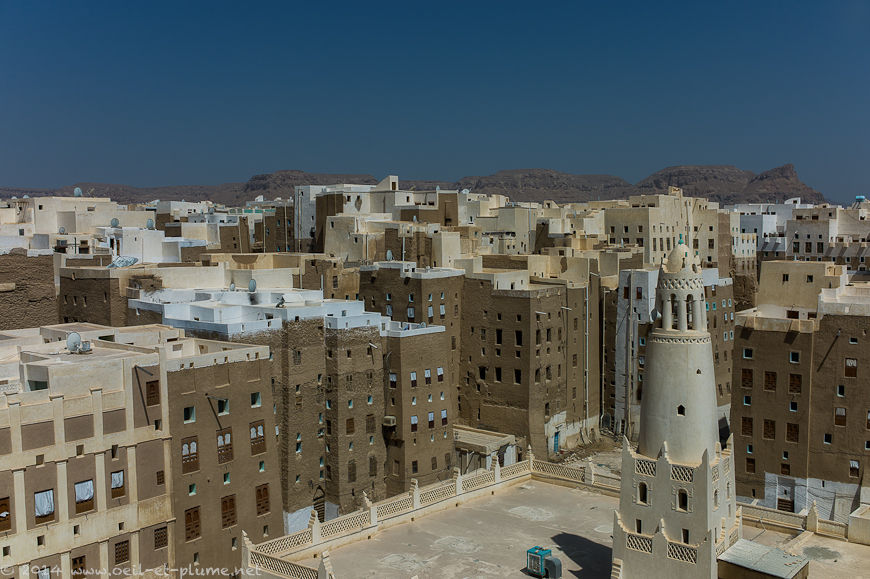
Despite or maybe because its modest dimensions, Shibam resident population was well structured, based on a refined division of occupations. Lower social classes used to live in the southern part around the suq, while prominent and wealthy ones lived in the northern part of the walled city.
My visit starts in the bazaar area. Nicknamed ‘Manhattan of the Desert’, Shibam expanded vertically due to its walled and limited ground space. Mud houses are typically thirty meters high and count from five to nine floors. Shops occupy the ground floor, while goats and sheep are kept overnight in the first floor. Male and female members of the family live respectively in the third and fourth floors. Higher floors are devoted to couples. A terraced roof tops the mud skyscraper.
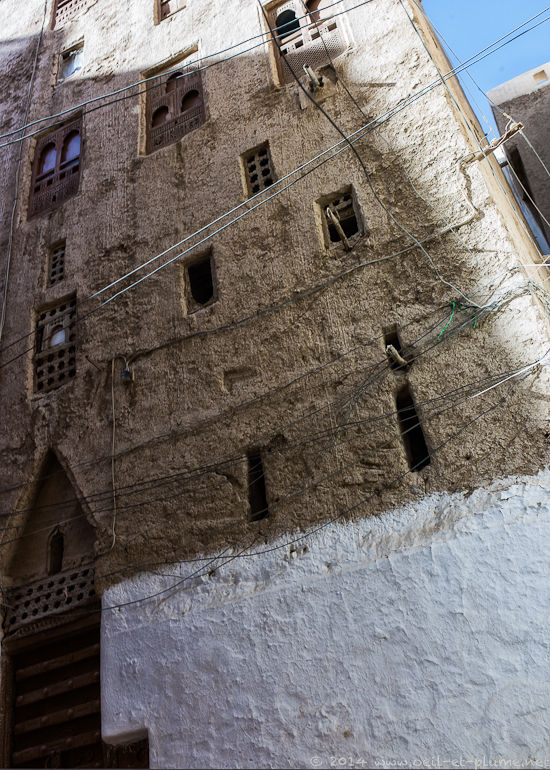
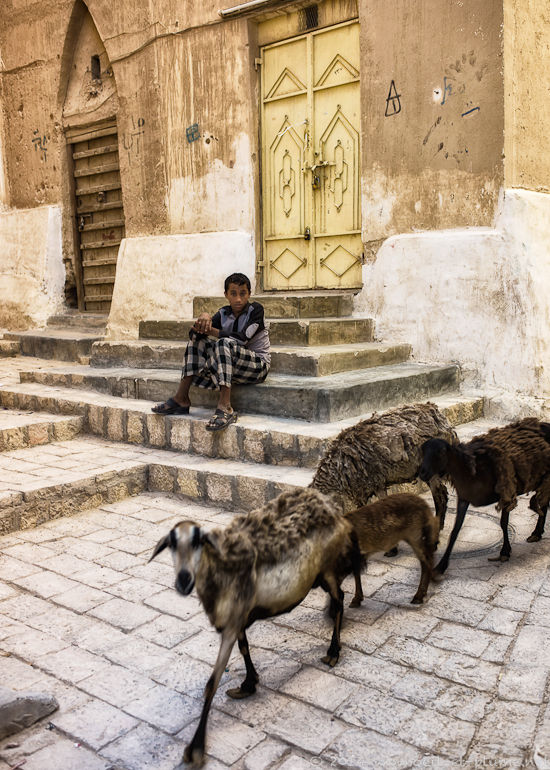
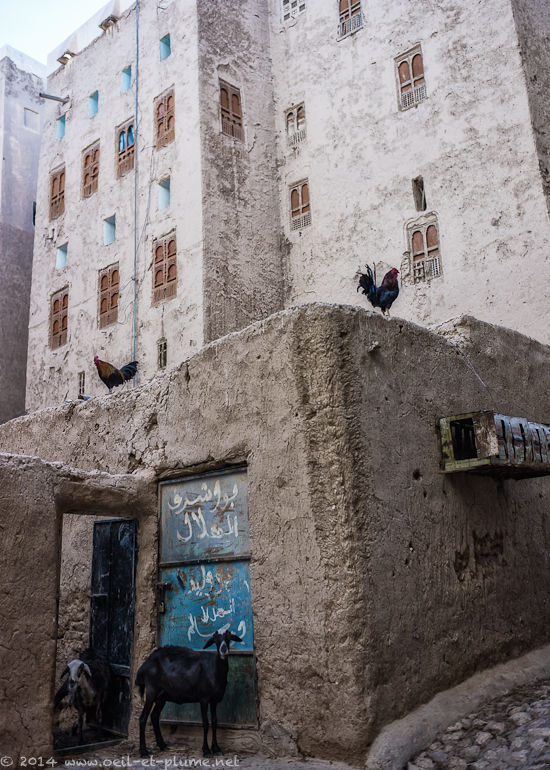
Islam shapes profoundly the daily life of Shibam, today as yesterday. The city counts five mosques, with the oldest one built in the 8th century. The cramped town counts barely open spaces such as this square.
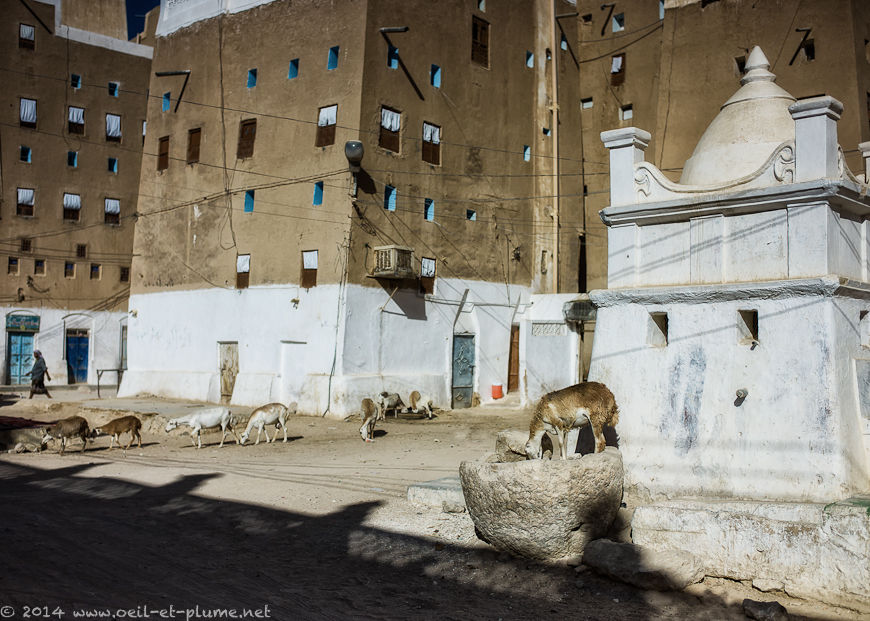
I love the old wooden doors, beautifully built and carved. They operate without outside key. By daytime, the visitor uncovers a side hole and introduces the forearm to open the door from inside. At night, the tapped side hole is locked from inside for security.
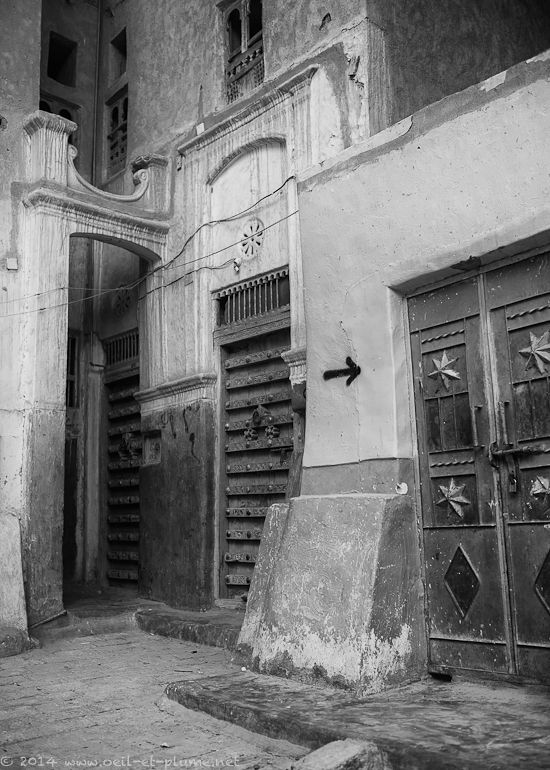


Musharabieh windows are also exquisite for their shape and functionality, meant to allow women to look down to the street unnoticed. Light coloured window curtains maintain privacy vis-à-vis the neighbours living opposite the street. Despite all the attention paid to privacy, social solidarity also percolates across Shibam, as illustrated by the small containers running on wires from windows to windows of neighbours living across the street, mostly at the female floor level.
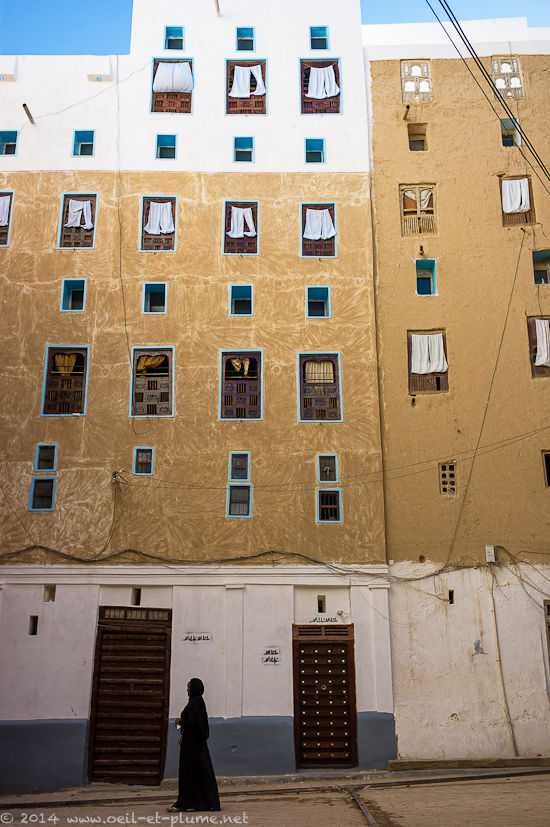
Residents are as open and welcoming as your own attitude. Younger generations are indeed easier to approach, as street games bridge across cultures.

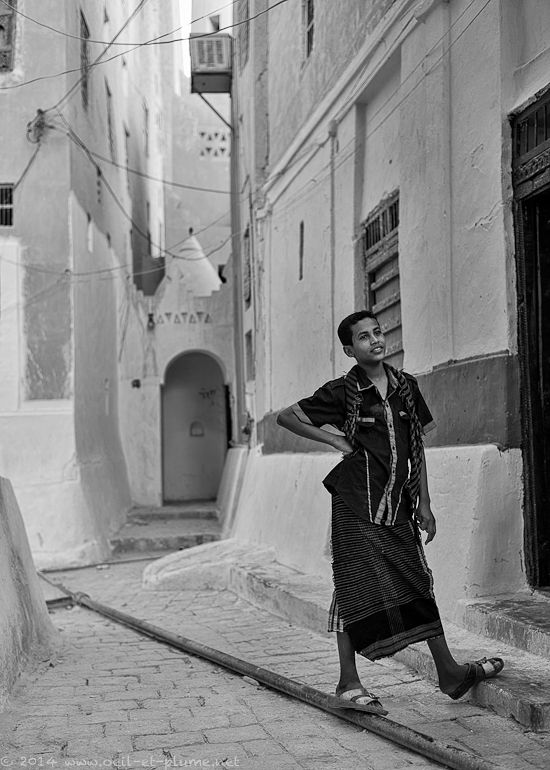


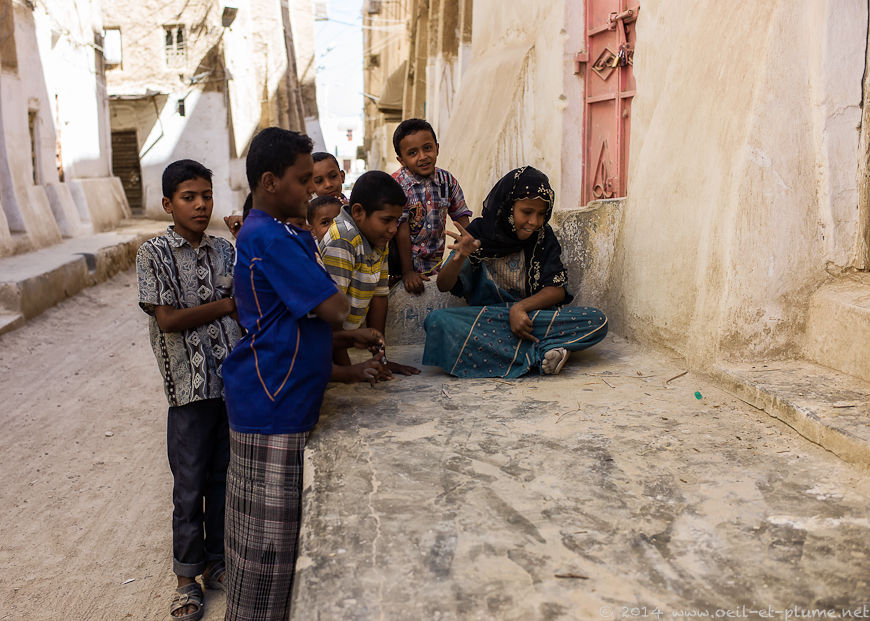
On my way out, I even spotted a genuine and reciprocal love between A and B. Please keep this breaking news confidential, as their parents don’t know about it yet…
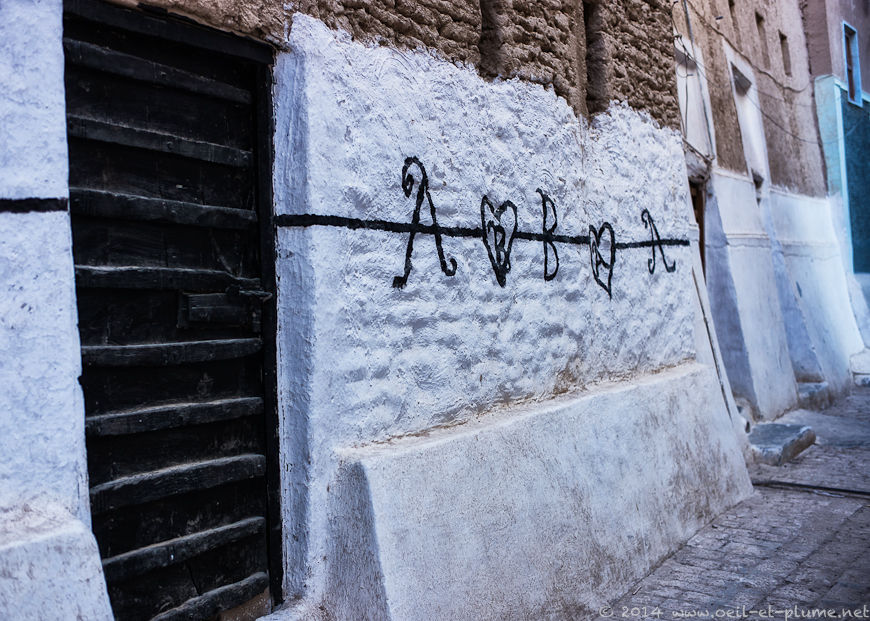
Leaving the walled town with regrets, I don’t resist in walking around the walled perimeter. Wadi Hadramout was once a flourishing farming land. Farming and animal husbandry still represent a significant part of the local economy. The production of whitewash constitutes another traditional activity, as it is used to strenghten and adornate mud buildings.

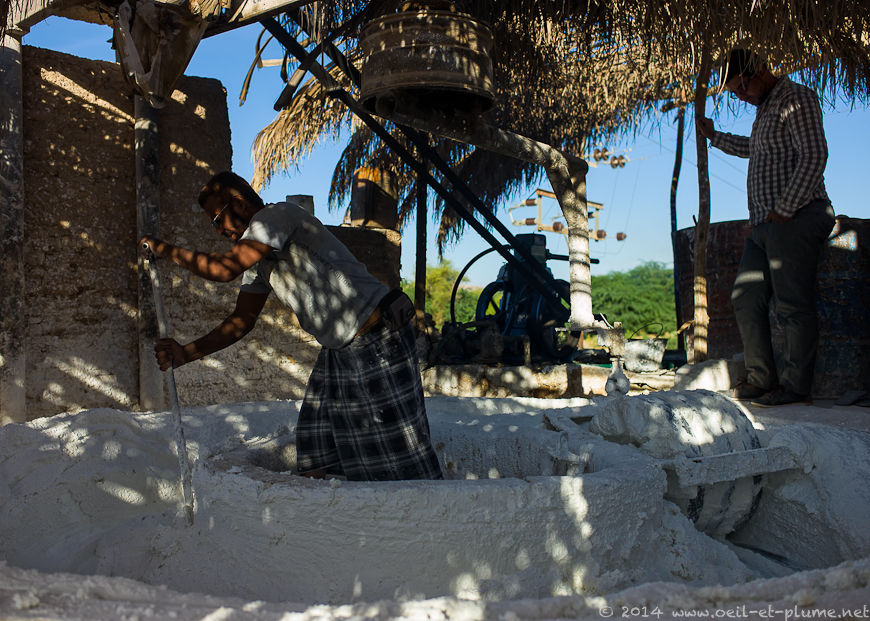
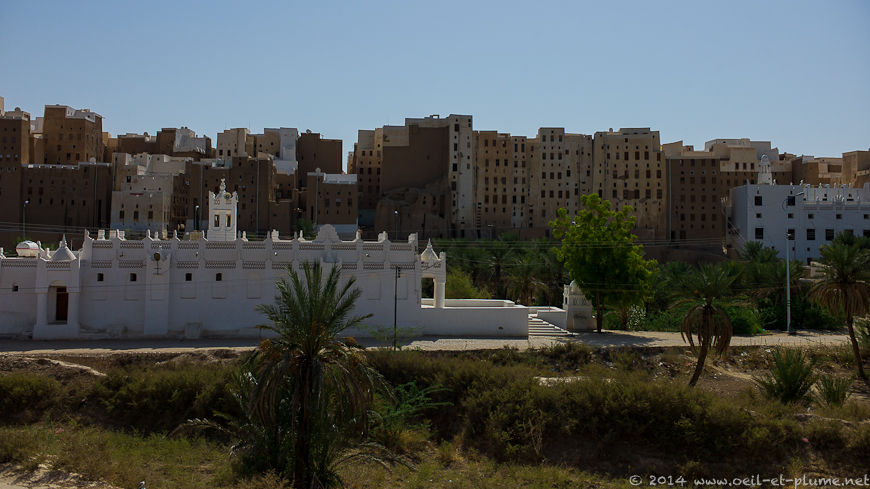
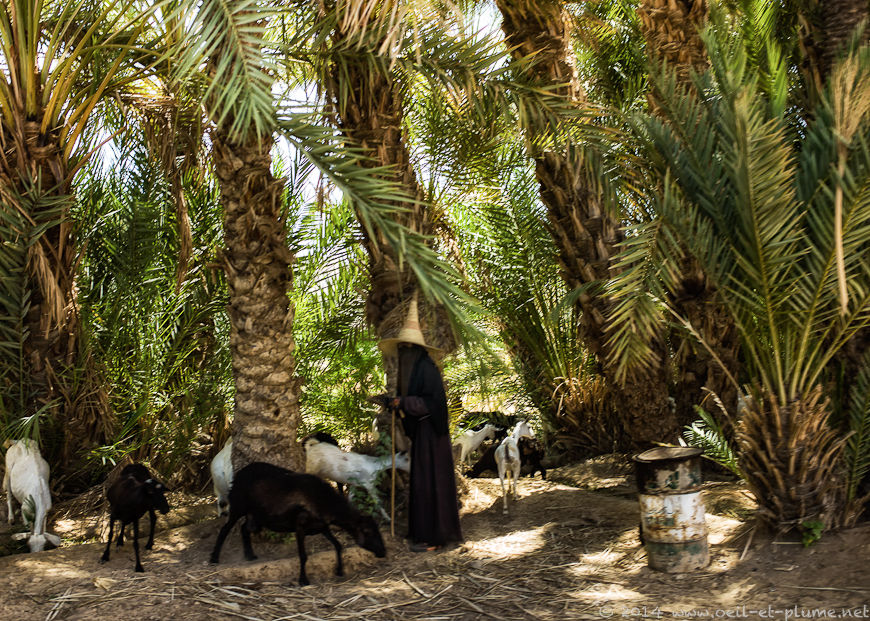
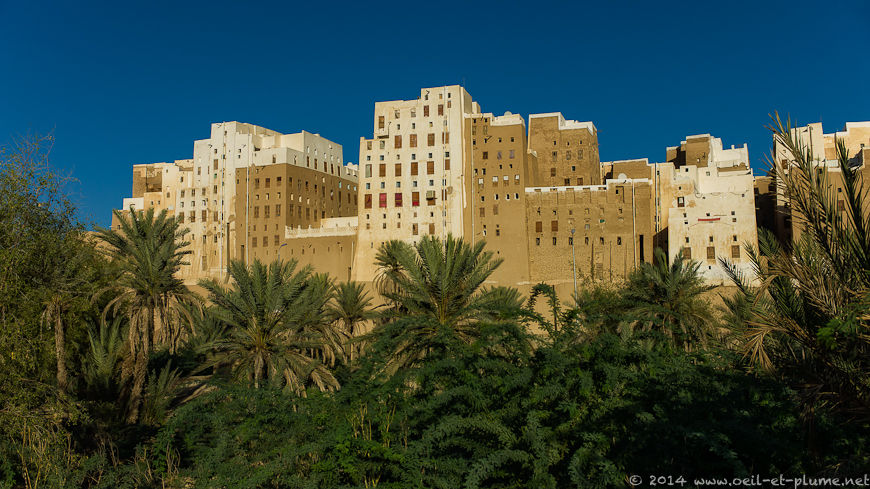
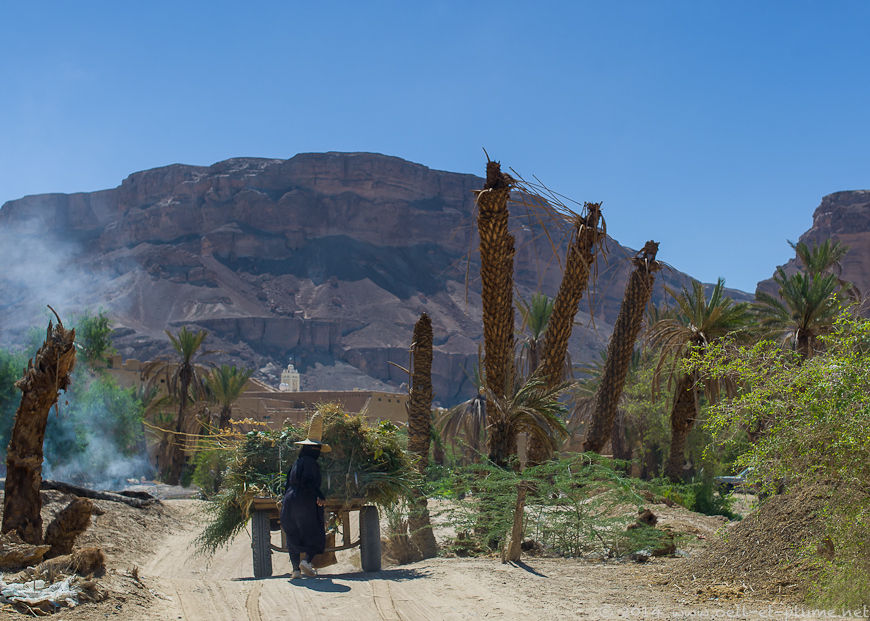
On my way back to Seyoun, I feel already nostalgic of Shibam. I stop to admire an old mud house devastated by a flood some years ago. A couple of children join me a few minutes later. They soon ask me: ‘Why do you photograph this old mud house? You don’t have any destroyed house in your village?’

I try to explain them that my home village does not count any mud house and that the derelict state of this mud building adds a poetic touch to the beautiful surrounding landscape. They nod unconvincingly.
To me, mud architecture illustrates the fragile but indispensable alliance between nature and mankind in desert areas. My point is probably best expressed by pictures like those above.
How to conclude a post on such an awesome region? By planning another visit indeed.
Cheers,